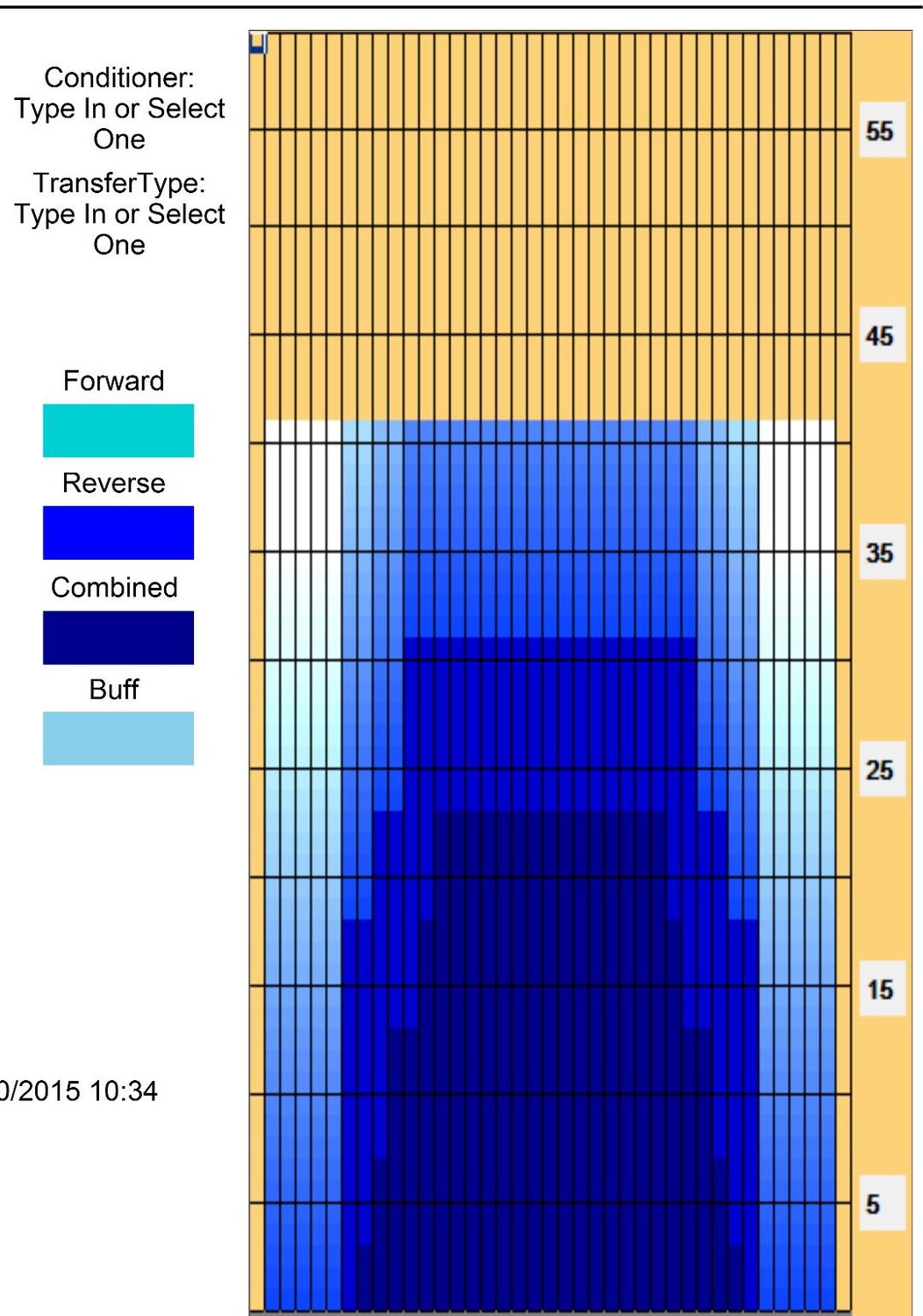The easiest bowling oil pattern is one that will give bowlers a good chance to score well without having to adjust to changing lane conditions. This type of pattern should provide a consistent ball reaction throughout the entire game. It should also provide enough challenge to keep bowlers interested and engaged. The pattern should not be too easy or too difficult. The oil pattern should also provide a good balance of dry and oily sections, allowing for a variety of ball reactions. The best oil patterns for beginners are those that are symmetrical and provide a consistent ball reaction.
What is Bowling Oil?
Bowling oil is a lubricant that is applied to the lane surface to allow bowls to roll more smoothly. The oil is applied in a pattern that helps to control the speed and direction of the bowl as it travels down the lane. This pattern, also known as an oil pattern, is designed to create a specific type of challenge for bowlers depending on the level of difficulty. An easy oil pattern will allow bowlers to score higher points with fewer chances of an error. Understanding what makes an oil pattern easy can help bowlers maximize their score.
An easy oil pattern will have a wider area of oil coverage. This means the oil will be applied to a larger portion of the lane, making it easier for bowls to traverse the lane surface. The oil will also be applied at a lower viscosity, meaning it will be less likely to cause bowls to veer off course. The oil pattern may also be designed with flatter transitions from the dry lane to the oiled lane, allowing for a smoother transition of the bowl from dry to oiled surfaces. Finally, the oil pattern will not feature any sharp angles or sudden changes in direction, making it easier for the bowl to stay on course.
What is a Bowling Oil Pattern?
Bowling oil patterns are a crucial component of the sport of bowling. The oil pattern is the amount of oil that is used on the lane during competition that will affect the bowling ball’s reaction. It is the responsibility of the tournament directors to create a challenging and fair oil pattern that will test the skills of the bowlers.
The difficulty of an oil pattern is determined by the amount of oil used and how it is distributed on the lane. Oil patterns can range from easy to very difficult, and can be customized to fit the skill level of the bowlers. Easy oil patterns are typically less than 40 feet in length and have an even distribution of oil across the entire lane. These patterns allow the bowlers to make easy adjustments and play a game with less risk of error.
More difficult oil patterns are longer in length and have oil distributed across the lane in a more strategic way. These patterns require the bowlers to make more precise adjustments, have greater accuracy and control, and are designed to test their skills.
The easiest bowling oil pattern is the one that best suits the bowler’s individual skill level. Bowlers should consult with their local bowling alley or tournament director to determine the best oil pattern for their abilities. With practice and experience, bowlers can learn to adjust to different oil patterns and become more successful in the sport.
Types of Bowling Oil Patterns
Bowling oil patterns are the physical arrangement of oil on the lane. Different patterns offer different playing conditions, and it is important to understand the various types of oil patterns to be able to play the game successfully. There are a few types of bowling oil patterns, each with its own advantages and disadvantages.
Straight Patterns are the easiest oil patterns to play on, as the oil is distributed evenly across the lane and the ball follows a straight path. Straight patterns are good for beginners because they are easier to predict.
House Patterns are the most common oil patterns used by bowling alleys, as they are easy to maintain and generally forgiving. House Patterns tend to be more challenging than Straight Patterns, as the oil is not evenly distributed and the ball takes a more unpredictable path.
Sport Patterns are designed for more experienced bowlers and have a higher concentration of oil in the middle of the lane. This makes Sport Patterns more challenging, as the ball takes a longer, more curving path.
Tournament Patterns are the most difficult oil patterns to play on, as the oil is concentrated at the edges of the lane. As such, Tournament Patterns require the most skill and precision to play.
No matter what oil pattern you choose, it is important to understand the different types of oil patterns and how they will affect your bowling game. That way, you will be better equipped to choose the right pattern for you and improve your bowling scores.

Factors that Affect Bowling Oil Patterns
When it comes to bowling, oil patterns can make or break your game. They are the difference between a strike and a split. But what exactly is a bowling oil pattern and how does it affect your game?
Bowling oil patterns refer to the distribution of oil on the lane surface. The oil serves to reduce the amount of friction between the ball and the lane, making it easier for the ball to travel down the lane and for the pins to be knocked down.
The difficulty of a bowling oil pattern is determined by a number of factors, including the width of the oil pattern, the amount of oil applied to the lane, the type of oil used, and the pattern of the oil. For example, a wider oil pattern with more oil will be more difficult than a narrow oil pattern with less oil. Additionally, some oil patterns are designed to be more challenging, such as a sport shot pattern.
The lane conditions can also affect the difficulty of a bowling oil pattern. If the lane is too dry or too oily, it can drastically affect the difficulty of the pattern. If the lane is too dry, it can create too much friction, making it harder for the ball to travel down the lane. If the lane is too oily, it can make it harder for the pins to stand up.
Understanding the factors that affect bowling oil patterns can help you choose the best pattern for your game. Knowing which pattern is best for your lane conditions can greatly improve your score and help you reach the top of the leaderboard.
Practicing on Different Bowling Oil Patterns
Bowling is a popular sport that is enjoyed by people of all ages. It can be a lot of fun, but it also requires skill and knowledge. One of the most important aspects of bowling is knowing the different oil patterns. Oil patterns are essential for getting the best score possible. They determine how the bowling ball will react when it rolls down the lane. Knowing the different oil patterns is essential for any bowler who wants to be successful.
Practicing on different bowling oil patterns is the best way to become familiar with them. Different patterns require different approaches and techniques, so it is important to practice each one thoroughly. That way, you will be able to adjust your style to any given pattern. Additionally, it is important to understand the different types of oil that are used on the lanes. Different oils have different characteristics that can affect the way the ball moves down the lane.
Finally, it is important to practice on the same oil pattern that will be used in tournaments and competitions. This will ensure that you are prepared for any situation. With the right practice and knowledge, you can become a master of any bowling oil pattern. So, if you are looking for the easiest bowling oil pattern, practice on all of them to find out which one works best for you.
Strategies for Bowling on Difficult Oil Patterns
Bowling on difficult oil patterns can be a challenge for most bowlers. While the oil pattern can be adjusted to create a more challenging experience, it is important to understand the different strategies that can be used to increase your score.
One of the most important strategies when bowling on a difficult oil pattern is to pay attention to the oil pattern. Knowing the pattern can help you make better decisions on which ball to use and where to aim. This is especially important for high-skill bowlers, as they have more control over their shots.
Another strategy is to use a different ball for each oil pattern. Different balls can react differently to oil patterns, so it is important to choose the right one for the situation. Some bowlers choose to use a different ball for each lane, while others prefer to use one ball for all oil patterns.
Finally, practice makes perfect. It is important to practice on different oil patterns so you can understand how to adjust your shots and develop a strategy for each pattern. By taking the time to practice, you can learn to read the oil pattern and adjust your shots accordingly.
By understanding the different strategies for bowling on difficult oil patterns, you can increase your score and have more success on the lanes. With the right strategy, you can adapt to any oil pattern and improve your bowling game.
FAQs About the What Is The Easiest Bowling Oil Pattern
Q1: What is the easiest bowling oil pattern?
A1: The easiest bowling oil pattern is a light, symmetrical pattern that typically has a total oil volume of 6-10 mL, with no more than 3 mL of oil applied to any one board. The pattern should be easy for bowlers of all skill levels to play on.
Q2: What type of ball should I use on an easy oil pattern?
A2: A ball with a lower RG (radius of gyration) and a higher differential will be best suited for an easy oil pattern. This type of ball will have a smoother, more consistent reaction on the lanes.
Q3: How often should I clean my bowling ball on an easy oil pattern?
A3: On an easy oil pattern, you should clean your bowling ball after every 3-4 games. This will help prevent oil build-up on the surface of your ball and ensure consistent performance.
Conclusion
The easiest bowling oil pattern is the house pattern. This is a low-maintenance pattern that is great for bowlers of any skill level. It is also a great way to practice and develop your game. It is important to remember that no matter the oil pattern, practice and technique are key to improving your score.



